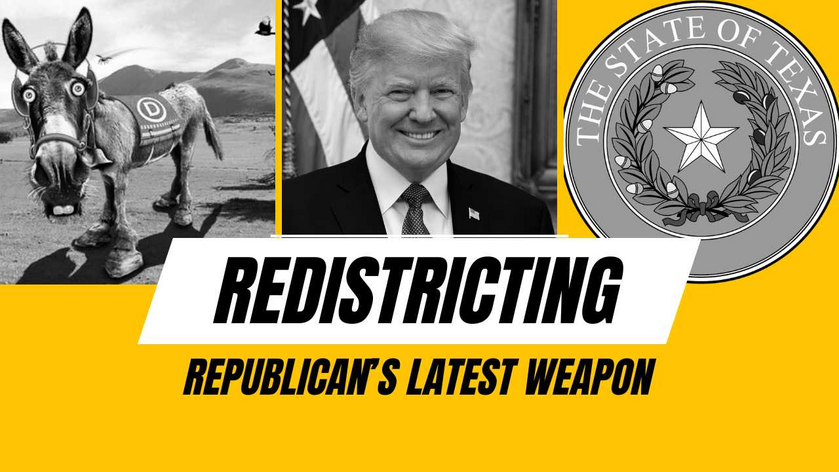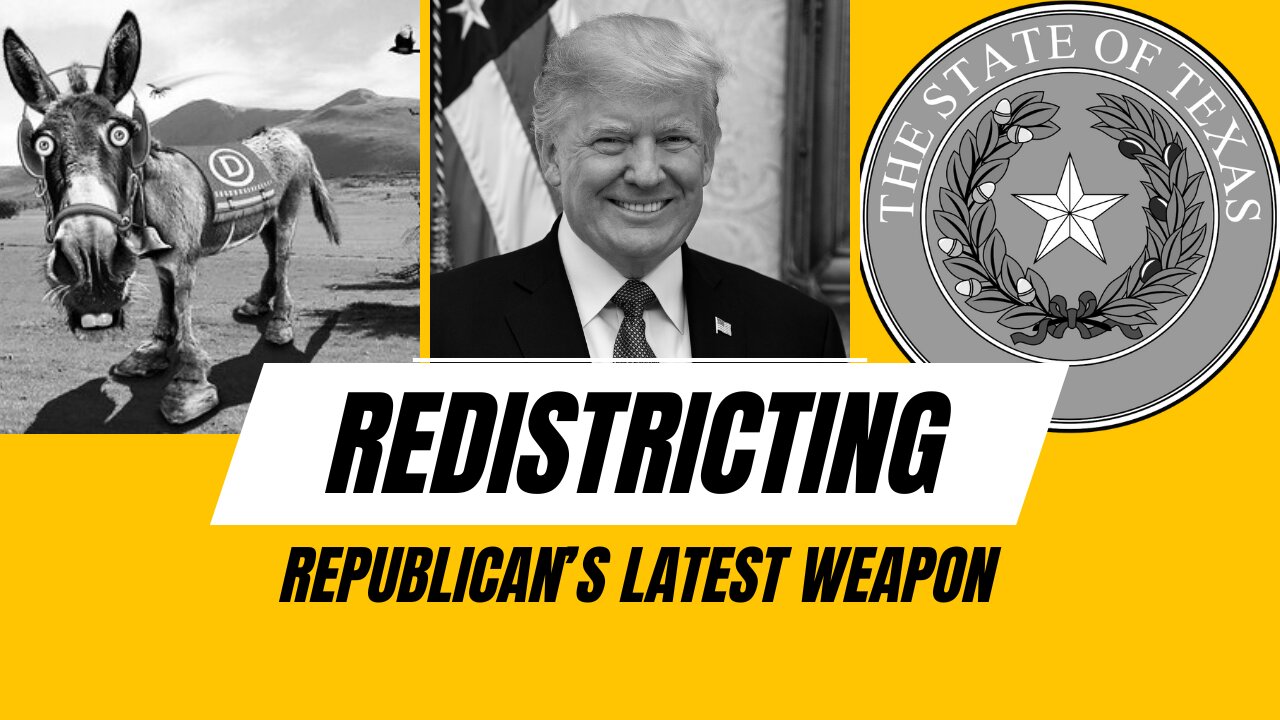Yesterday a three-judge panel upheld a preliminary injunction against Texas as it fights illegal immigration despite repeated federal interference. Gov. Greg Abbott (R-Texas) has now petitioned for the Fifth Circuit to hear the case en banc. But the ruling is not the only mistake in this case. Leftist-oriented media have deliberately distorted the meaning of the original injunction. In short, they have reported, not what the district court actually ordered, but what they wished it had ordered.
Current state of the Texas buoy case
To review: Texas created a riparian floating barrier along the centerline of the Rio Grande near Eagle Pass, Texas. Eagle Pass is notorious as the busiest illegal crossing point along the river for migrants hoping for handouts. (And for drug smugglers and child traffickers.) The barrier consists of ballards, or buoys, strung on a cable, with netting beneath them, alternating with metal disks with serrated edges, resembling circular saw blades.
Gov. Abbott acted after the first time that Border Patrol agents have cut concertina wire the State has placed on property lines running along the river. When the Department of Justice peremptorily ordered the State to remove the barrier, Abbott defiantly said, “So sue us.”
Sue them the Feds did, in the U.S. District Court for the Western District of Texas (Austin Division). (See this docket page and complaint, since amended.) The complaint alleged a hazard to navigation (per the Rivers and Harbors Act), and diplomatic complications. (The Mexicans have complained about the barrier.)
The case is now in the hands of David A. Ezra, a Senior Judge owing his appointment to President Ronald W. Reagan. Chief Justice Roberts assigned him to the Western District to ease its heavy workload; he should be serving in Hawaii.
Judge Ezra, on September 6, handed down a preliminary injunction directing the Governor to:
Stop all work on the riparian barrier, and
Shift it to the riverbank on the Texas side.
Gov. Abbott appealed to the Fifth Circuit (see docket page).
Disposition of the appeal
Preliminary injunctions are a favorite “meat” for appeal, because grounds for them must be very specific. The movant must establish:
Likelihood of prevailing on the merits of the case,
Irreparable harm absent the injunction,
A balance of harms and equities in his favor, and
That the injunction serves the public interest.
In other words, a court normally grants such an injunction when it seriously expects to rule, or see a jury find, in a plaintiff’s favor. Gov. Abbott disputed that in this case, on one paramount ground: the Rio Grande near Eagle Pass is not navigable. The only things even the judge says might be able to pass in those waters, are shallow-draft craft. The example he uses: airboats.
Judge Ezra took note that the governor had moved the barrier back in August, after it drifted into Mexican waters. (The original link in the injunction resolves to a not-found error; this link resolves to the correct content.) Tellingly, the judge did not order the State to take those buoys out of the river entirely.
Perhaps for that reason, two of the three Fifth Circuit judges were ready to reinstate the injunction. But the dissenting judge pointed out several invalidating mistakes in that judgment.
For the benefit of readers, here is the injunction,
and the published opinion reinstating it.
What is wrong with this appeal judgment
The two judges who voted to affirm are:
Dana M. Douglas, who owes her appointment to President Joseph R. Biden, and
Carolyn Dineen King, a senior judge who owes her appointment to President James Earl “Jimmy” Carter, Jr.
The dissenting judge is Don R. Willett, who owes his appointment to President Donald J. Trump.
Very clearly, Judges Douglas and King are carrying water for President Biden’s open-border policies. Judge Willett explains their reversible errors of reasoning far better than anyone else can.
Douglas and King depend on Judge Ezra’s finding that the Rio Grande is navigable at that particular stretch. Not so, says Judge Willett. Ezra, Douglas and King assert that the river was an active channel in the past. In addition, Ezra found that with “reasonable improvements” could become so again.
On the first point, Willett shreds the evidence – the statutes, treaties, and a Corps of Engineers study – finding navigability. Statutes and treaties do not establish navigability; they merely forbid interference with it. That’s a key distinction, because the only way to establish navigability is to try to navigate it. The Corps of Engineers made the same mistakes Judge Ezra made – relying on statute and treaty. They could not find actual accounts of historical navigability or navigation. What they found was an account of an exploration of that part of the river – with a keelboat!
That doesn’t make it navigable. “Navigable” means of practical value to convey passengers or goods. None of that is in evidence.
Navigability means more than crossing
Judge Willett turned to several cases the other judges used, that referred to ferry traffic directly across the river. Ferries do not make a river navigable. “Navigable” means able to carry people or goods along the river, not merely across it.
Incredibly, Douglas and King seem to rely on a 1949 book (Gilpin L., Rio Grande: River of Destiny) to establish historical navigability. The problem: that book describes the 200 miles of the river ending at its mouth as navigable. Eagle Pass is far more than 200 miles upriver from the Gulf of Mexico. Douglas and King also rely on a case (the Rio Grande Dam case) allegedly saying that the navigability of the river is “common knowledge.” But that case said one must adduce evidence to establish how far upriver that navigability extends. No one has brought forth enough evidence to suggest people regularly “navigated” along the 1000-foot segment near Eagle Pass, Texas.
As to the harms that the barrier brings on the country, those consists of an apparent diplomatic crisis. The government of Mexico has complained about the barrier and wants it gone. Gone would mean taken out of the river completely. But the injunction does not order that. It orders the barrier moved onto the riverbank to let “airboats and other shallow-draft craft” pass.
One weakness in the Texas case
The federals also assert that the riparian barrier poses a hazard to human life. Of course that hazard depends on one thing: illegal migrants crossing the river at a point where they have no legitimate business crossing. As Judge Willett points out, the currents of the Rio Grande can be treacherous enough without the barrier. Judges Ezra, Douglas and King suggest this alone makes the barrier dangerous; Judge Willett does not agree.
But Texas has, thus far, not shown how the barrier can save lives: by “direct[ing] migrants to appropriate … points of entry.” That’s the weakness, and it is unaccountably sloppy of Abbott and Attorney General Ken Paxton to overlook this. Texas will also need to show how the barrier can and will deter drug smuggling, human trafficking – and terrorist infiltration. That last is a vital consideration in view of the Fourth Arab-Israeli War. (Which is raging once again; all truces are now off.)
In fact, Texas has beefed up its defense of the border with tanks and Armored Personnel Carriers. A barrier of any sort would be a logical first-line defense, in a defense plan including tanks and APCs.
The press makes its own errors
But at least two alternative media organs are making an unforced error in their coverage of the federal case. To repeat: Judge Ezra did not order Texas to get those buoys (and nets and serrated-edged disks) out of the river. He told the State to move the barrier to the Texas riverbank – and specifically distinguished that from complete removal.
So why did Politico and Newsmax both use the verb to remove in their coverage? They use the same links CNAV found at CourtListener. But they still inaccurately use verbs like to remove and verb phrases like to take down to describe the thrust of the injunction. Such language would imply:
Lifting the concrete river bottom anchors out of the water,
Cutting the cable used to string the buoys, and
Lifting out every buoy, every net, and every serrated-edge disk to the Texas side and hauling them away.
That is not repeat not what the injunction says to do.
On to further appeals
Gov. Abbott has, of course, filed for an en banc hearing. That would convene more than just three random circuit judges. According to the Fifth Circuit’s Rules, an en banc court in that circuit consists of:
All active judges, and:
Any senior judge(s) on the original panel, if said judge(s) so elect(s) and the Chief Judge so assigns.
The Fifth Circuit currently has sixteen active judges, one vacancy, and nine “seniors.” Of the actives, only Judge Douglas owes her appointment to Biden. The other fifteen owe theirs to these Presidents: four to Bush Junior, one to Clinton, two each to Reagan and Obama – and six to Trump. Judge King, the only senior judge on the original panel, would be perfectly within her authority to take part. Given the distribution of Presidential appointments, the vote would likely be 12-5 for Texas. Or it could fall out 9-8 for the federals, if Bush Junior’s appointees break for the government.
An en banc petition is a risky move. According to the Fifth Circuit’s practitioner’s guide, fewer than 3 percent of en banc petitions succeed. A meritless petition can draw immediate judicial sanction. Nevertheless, Judge Willett dropped hints on every page of his dissent that Texas should file an en banc petition. His repeated use of words like mistake(s), error(s), erroneous, and the verb to err lead to no other conclusion.
Abbott has also indicated how high he would press his appeal:
https://twitter.com/GregAbbott_TX/status/1730712608724984095
Where Texas should go
Texas should actually be suing the federal government for dereliction of its Article IV Section 4 duty. That duty includes protecting the States from invasion. The federal government, far from protecting Texas from invasion, has invited that invasion. Gov. Abbott probably believes the immediate goal of inviting illegal immigrants to cross into Texas is to “flip Texas blue” by granting those migrants instant naturalization – and with it, the right to vote in Texas. To forestall that, he has been putting migrants onto buses, letting them name their destination. Now several “blue cities” are bursting at their city limits and are complaining. But the federal solution is likely to interdict the buses, transport all bussed migrants back to Texas, and march into the Office of the Texas Secretary of State and peremptorily order him to register them to vote.
Even laying that aside: as Judge Willett masterfully shows, the Rio Grande is not navigable at Eagle Pass, Texas. Thus Article VII of the Treaty of Guadaloupe-Hidalgo does not and cannot apply.
More tellingly: diplomatic considerations cannot substitute for properly protecting the country from invasion.
In fact the majority opinion stretches every possible point to demonstrate a hazard to existing navigation. (It also defines search-and-rescue by the Border Patrol as “navigation.”)
The Fifth Circuit does not like en banc petitions. But this is an issue of vital – indeed Constitutional – importance. For that reason alone – apart from the reversible errors by Judges Ezra, King and Douglas – the en banc petition is appropriate.
Link to:
The article:
https://cnav.news/2023/12/02/news/texas-buoy-case-mistakes-all-around/
Video:

U.S.A. v. Abbott:
District court:
Docket:
https://www.courtlistener.com/docket/67630985/united-states-v-abbott/
Complaint:
Amended complaint:
Injunction:
Fifth Circuit:
Docket:
https://www.courtlistener.com/docket/67770228/united-states-v-abbott/
Opinion:
https://storage.courtlistener.com/recap/gov.uscourts.ca5.215588/gov.uscourts.ca5.215588.98.0.pdf
Rules:
Practitioner’s guide:
Repaired link to story cited in the injunction:
Official press release by Mexico on the barrier:
Post by Gov. Abbott promising to take it to the Supreme Court:
https://twitter.com/GregAbbott_TX/status/1730712608724984095
Declarations of Truth X feed:
Declarations of Truth Locals Community:
https://declarationsoftruth.locals.com/
Conservative News and Views:
The CNAV Store:
Clixnet Media





















